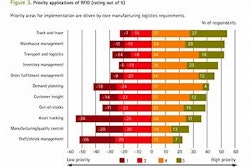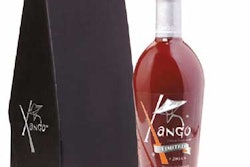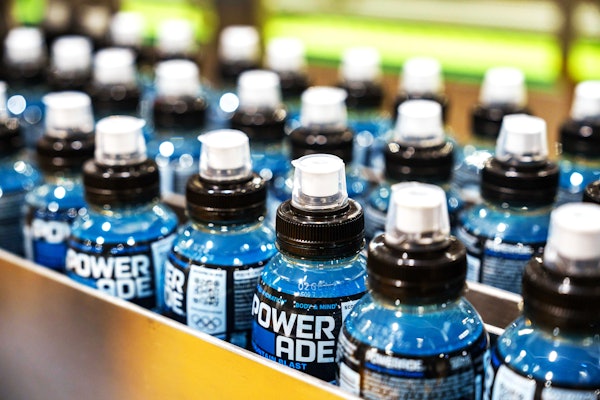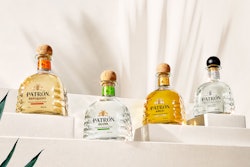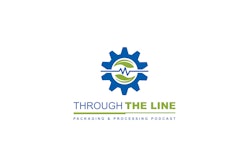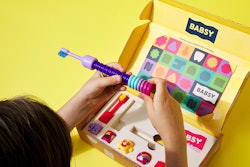Burt’s Bees is fairly buzzing about offering several of its all-natural products in multilayer tubes that use post-consumer recycled (PCR) content and have injection-molded caps that also employ recycled resin.
A growing manufacturer of a variety of natural personal care products, this Durham, NC-based company is committed to being environmentally responsible. In fact, over the years, the company has invested more than $7 million in preserving about 16ꯠ acres of forest land from development in Maine, where the company got its start.
The year-long recycled-content tube project began in early 2003. Two tube suppliers capable of developing a PCR-content tube were identified, says Donna Hollenbach, new products project manager at Burt’s Bees. CCL Plastic Packaging was selected, she says, because it had supplied so many tubes for product compatibility testing, and it was the first company that could do this on a production basis.
Lengthy project
“We had been asking around for this for a couple of years,” Hollenbach says. “We had already been buying some laminated tubes from CCL, and we were referred to the new division that was pioneering the use of post-consumer recycled resin in tubes.”
This project follows Burt’s Bees’ adoption of PCR for products packed in bottles. “For the longest time, we had to pack in either glass bottles or aluminum tubes,” Hollenbach says. “We did use some laminated tubes, primarily for our small sample tubes. Once we found sources of PCR plastic bottles, we were able to shift away from glass, which is not very bathroom friendly.
“It is against our company policy to use virgin plastic containers,” Hollenbach continues. “And now we’re able to shift almost all our tube-packed products from aluminum into the PCR tubes.”
Although Burt’s Bees isn’t the first company to employ PCR in tubes, it is the first in a PCR tube that also uses PCR to make the closure, says Jeffrey Hayet, national accounts manager at CCL Plastic Packaging. “We originally developed the PCR tube for Aveda, a division of Estée Lauder,” Hayet says. “However, Burt’s Bees took it one step farther by using PCR injection-molded caps on their tubes as well. Even though Burt’s Bees is a much smaller company with fewer technical resources, it actually pushed the PCR technology farther along, which is wonderful to see in this business.”
PCR in the middle
Aveda’s tubes use the PCR as the inside layer. Because of its products, Burt’s Bees needs a product-contact layer of virgin polyethylene. The structure of the tube is a coextrusion of PE/tie layer/PCR/tie/virgin PE.
Purchased with the cap in place, the total PCR content is 40% to 50% of the total package weight, Hayet points out. He thinks the PCR content is actually higher. But Burt’s Bees wanted to be on the safe side when it came to making claims on its package.
Thus far, Hollenbach says, Burt’s Bees has tested 15 different products with the PCR tubes. Only a single product wasn’t compatible, so it’s still being filled into an aluminum tube. “But, we’re looking at possibly reformulating this product for the PCR tube,” she says, “or we may switch to a laminated tube.”
The first products in the new tubes were marketed in January, and a month later Burt’s Bees ordered tubes for five more products. Other orders are in the wings. While the children’s toothpaste product is printed offset by CCL in five colors, other tubes will use six colors, Hayet reports.
Tough to make and print
Hayet has a long background in providing containers with PCR content. But, he says, because of Burt’s Bees’ types of products, the tubes were a challenge to make and CCL made a large investment in equipment to coextrude and print the tubes.
“A lot of stress is applied to the material because we’re reheating it, so our production people had to learn how to compensate for those stresses in the extrusion process,” Hayet says. “It’s a real challenge to make a tube that’s round because of the different layers of material.”
The other issue is the thickness of the tube, nominally 0.018”. “To give the customer a squeeze tube, you’re dealing with a very thin material, even though it comprises five layers,” Hayet points out.
Initially, Hayet says, the hurdle was finding the source of PCR resin that’s as clean and contamination-free as possible. He declines to identify his PCR sources for either high-density polyethylene for the tube or the polypropylene for the cap, saying only that CCL helped the recyclers refine the processes to qualify them for this application. Cleanliness has always been an issue with HDPE because the milk bottles that serve as the source can retain a smell of spoiled milk, Hayet notes. So the HDPE has to be cleaned with chemicals.
Mechanically, Hayet says, the materials have to be heated and cooled in a certain manner, or the process will produce an oval tube shape. And these round, flexible tubes are more difficult to surface-print in the round.
The major challenge for producing the stand-up cap was in finding a reliable source of PCR PP. Hayet said only that his source reclaims post-consumer tape cassettes and reliably cleans the PCR. The injection-molding process is much more forgiving in producing the ribbed stand-up caps, compared to the coextruded tubes.
In addition, CCL also furnishes the sealed tube with an induction-sealed foil liner, which had not been available with Burt’s Bees’ previous aluminum tubes. For Burt’s Bee’s filling operation, some change parts were purchased for its crimp-sealing process.
Resin vs tube costs
Hayet says that the costs of PCR resin are usually comparable to virgin resin, sometimes a bit lower. However, because of the effects on CCL’s coextrusion process, these tubes have to be run slower to better manage control of the variables. So, these tubes tend to cost more to buy, Hayet adds.
Hollenbach acknowledges the additional costs to buy, but she says it’s more than offset by other savings for Burts’ Bees. First, she says, “when you take into account the number of aluminum tubes that are dented in production and become scrap, or those that are dented in our distribution process,” eliminating those losses represents some cost recovery.
Even more important, Hollenbach says Burt’s Bees previously packed the aluminum tubes into folding cartons to minimize damage. “With the new PCR tubes, we no long require a carton,” she says. For these reasons, the company expects that the new tubes will be more economical in the long run.
At the same time, Burt’s Bees products aren’t as price sensitive as mass-marketed products would be, so package costs are less critical. The selling price for the Doctor Burt’s Children’s Toothpaste is $4.50 for a 1.75-oz tube.
Hollenbach says it’s too early for any customer reaction to the new tubes. “We always show new packaging to our representatives across the country, and they were thrilled,” she adds. “We had complaints with our aluminum tubes. People told us they couldn’t get all the product out of them. We think aluminum has a place for certain products, especially for pharmaceuticals,” Hollenbach concludes.



